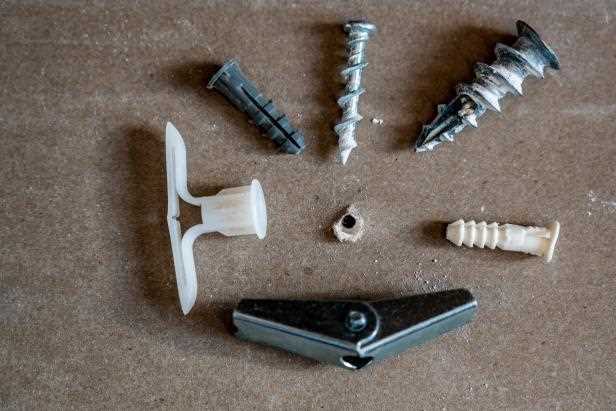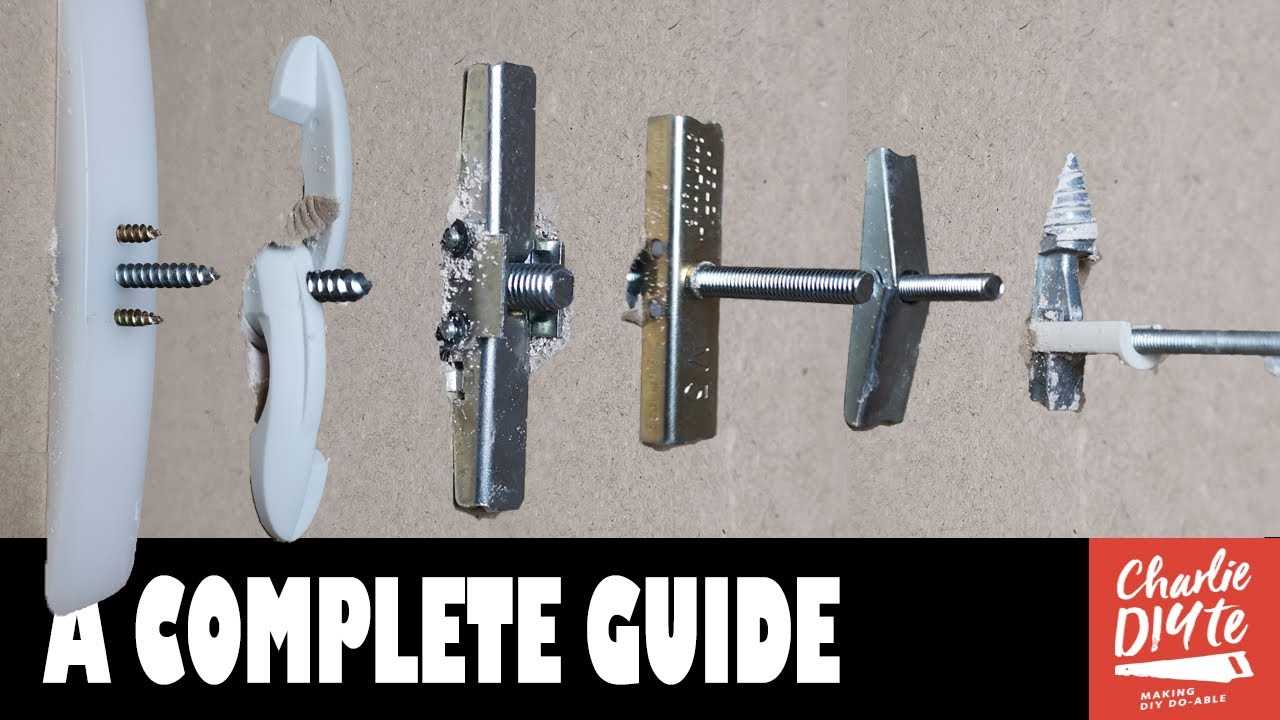Contents
The complete guide to plaster wall anchors: everything you need to know

When it comes to the installation of screws, studs, and other hardware on plaster walls, it can be a daunting task. Plaster walls are known for their durability and strength, but they can also be quite delicate. That’s where wall anchors come in.
Plaster wall anchors are specially designed to provide extra support and stability when attaching items to plaster walls. These anchors are designed to distribute the weight more evenly across the surface, preventing damage to the plaster.
There are various types of anchors available for plaster walls, including toggle bolts, expansion anchors, and molly bolts. Each type has its own unique features and benefits, so it’s important to choose the right one for your specific needs.
Whether you’re hanging a heavy mirror, installing shelves, or mounting a TV, understanding how to properly use anchors on plaster walls is essential. In this ultimate guide, we’ll walk you through everything you need to know about plaster wall anchors, from choosing the right type of anchor to the step-by-step installation process.
Understanding Plaster Walls

Plaster walls are a common type of wall found in older homes. Unlike drywall, which is made of gypsum and paper, plaster walls are made of a mixture of lime or gypsum, sand, and water. Plaster walls have been used for centuries and are known for their durability and strength.
Mounting objects on plaster walls can be a bit more challenging than on drywall. The main reason for this is that plaster walls are thicker and harder than drywall, making it difficult to insert screws directly into the wall without causing damage. This is where plaster wall anchors come in.
Plaster wall anchors are devices that are used to provide extra support and stability when mounting objects on plaster walls. They are designed to distribute the weight of the object evenly across the wall, reducing the risk of damage and ensuring a secure installation.
There are several types of plaster wall anchors available, including toggle bolts, molly bolts, and plastic anchors. Toggle bolts are one of the most common types of anchors used for plaster walls. They consist of a spring-loaded wing mechanism that expands behind the wall when the screw is tightened, providing a secure hold. Molly bolts are similar to toggle bolts but have a different design, with a cylindrical body that expands behind the wall when the screw is tightened. Plastic anchors are another option, which are inserted into the wall and expand when the screw is inserted.
When installing plaster wall anchors, it’s important to locate the studs in the wall for added support. Studs are the vertical wooden beams behind the wall that provide structural support. By attaching the anchors to the studs, you can ensure a stronger and more secure installation.
Before installing plaster wall anchors, it’s important to prepare the wall by drilling pilot holes. This will help prevent the plaster from cracking and make it easier to insert the anchors. Once the pilot holes are drilled, you can insert the anchors and tighten the screws to secure the object to the wall.
Overall, understanding plaster walls and how to properly install plaster wall anchors is essential for anyone looking to mount objects on these types of walls. By using the right anchors and following the proper installation techniques, you can ensure a secure and durable installation that will last for years to come.
What are plaster walls?

Plaster walls are a type of wall surface that is commonly found in older homes. They are made by applying a mixture of plaster, sand, and water to a lath or wood framework. This mixture is then allowed to dry and harden, creating a solid and durable wall surface.
Unlike drywall, which is made from gypsum and comes in large sheets, plaster walls are applied in layers, giving them a unique texture and appearance. They can be painted or wallpapered to match the decor of a room.
One of the main advantages of plaster walls is their strength and durability. They are less prone to damage from everyday wear and tear compared to drywall. However, they can be more difficult to repair if they do get damaged.
When it comes to mounting items on plaster walls, special care needs to be taken. Plaster walls are not as forgiving as drywall when it comes to installing screws or other hardware. It’s important to locate the studs behind the plaster to provide proper support for any mounting.
Overall, plaster walls have a unique and classic look that many homeowners appreciate. With proper installation and maintenance, they can last for many years and provide a beautiful backdrop for any room.
Characteristics of plaster walls

Plaster walls have been used in construction for centuries and are known for their durability and strength. Understanding the characteristics of plaster walls is important when it comes to installing anchors or mounting hardware.
- Material: Plaster walls are made from a mixture of gypsum, sand, and water. This mixture is applied to a lath or a wooden framework to create a smooth and solid surface.
- Thickness: Plaster walls are typically thicker than drywall, ranging from 3/4 inch to 1 inch. This thickness provides additional strength and stability.
- Hardness: Plaster walls are harder than drywall, making them more resistant to damage. However, this hardness also makes it more challenging to install anchors or screws.
- Brittleness: Plaster walls can be brittle, especially if they are old or have been poorly maintained. Care must be taken when installing anchors or mounting hardware to avoid cracking or damaging the plaster.
- Mounting options: Unlike drywall, plaster walls do not have easily identifiable studs to anchor into. This makes it necessary to use anchors or other specialized hardware to securely mount items to the wall.
When installing anchors or mounting hardware on plaster walls, it is essential to choose the right type of anchor or hardware that is suitable for the wall’s characteristics. It is also crucial to follow proper installation techniques to ensure a secure and long-lasting mount.
Challenges of hanging items on plaster walls

When it comes to hanging items on plaster walls, there are a few challenges that you may encounter. Plaster walls are different from drywall in terms of their composition and strength, which can make it more difficult to securely hang items.
Here are some of the main challenges you may face:
- Hardness: Plaster walls are generally harder than drywall, which can make it more difficult to insert hardware such as anchors and screws.
- Fragility: Plaster walls can be more fragile and prone to cracking or crumbling, especially if they are old or poorly maintained. This can make it challenging to find stable mounting points.
- Limited anchor options: Plaster walls may not be compatible with all types of anchors. Some anchors, such as toggle bolts, require a larger hole and may not be suitable for plaster walls.
- Difficulty finding studs: Unlike drywall, which typically has studs spaced 16 or 24 inches apart, plaster walls may have studs spaced irregularly. This can make it more challenging to locate a secure mounting point.
To overcome these challenges, it is important to choose the right hardware and techniques for hanging items on plaster walls. For example, using anchors specifically designed for plaster walls, such as expansion anchors or molly bolts, can provide a more secure hold. Additionally, using a stud finder can help locate the studs behind the plaster, providing a stronger mounting point.
Overall, while hanging items on plaster walls may present some challenges, with the right tools and techniques, it is still possible to securely hang items and decorate your space.
Importance of Plaster Wall Anchors

When it comes to wall installation, using the right anchors is crucial. Plaster walls can be delicate and prone to damage if not properly supported. Plaster wall anchors are essential for providing stability and strength to your wall fixtures and preventing them from falling or causing damage.
Unlike studs, which are wooden beams behind the wall that provide support, plaster walls are made of a combination of gypsum and fiber. While studs can easily support heavy objects, plaster walls require additional hardware to hold the weight.
Plaster wall anchors are designed to distribute the weight of your fixtures evenly across the wall, preventing any concentrated pressure that could cause cracks or damage. They act as a secure base for screws, ensuring that your fixtures remain firmly in place.
One of the main advantages of plaster wall anchors is their versatility. They can be used with various types of fixtures, such as shelves, mirrors, artwork, and light fixtures. Whether you’re hanging a small picture frame or a heavy wall-mounted TV, using plaster wall anchors will ensure that your installation is secure and stable.
There are different types of plaster wall anchors available, including toggle bolts, plastic anchors, and expansion anchors. Each type has its own weight capacity and installation method, so it’s important to choose the right anchor for your specific needs.
Using the wrong type of anchor or not using anchors at all can lead to disastrous consequences. Without proper support, fixtures can become loose over time, causing them to fall and potentially causing injury or damage to your walls. Plaster wall anchors provide peace of mind and ensure that your fixtures stay in place.
When installing fixtures on drywall or plaster walls, always remember to use plaster wall anchors. They are a simple and effective solution for ensuring the stability and longevity of your wall installations. Don’t risk damaging your walls or having your fixtures fall down – invest in quality plaster wall anchors and enjoy a secure and worry-free installation.
Video:The complete guide to plaster wall anchors: everything you need to know
How Do I Use Drywall Anchors? | DIY Basics
Hello, I am Beverly J. Sanders, the voice behind the diverse articles you come across on styves.co.za. My passion lies in exploring the nuances of home improvement and sharing tips that can help you transform your living space into a haven of comfort and style. From the latest trends in home decor to practical cleaning advice, I cover a broad spectrum of topics to cater to a wide variety of interests.
In my recent works, I have delved into the advantages of incorporating a horizontal Murphy bed into your home to save space without compromising on design and functionality. I also explored the benefits of having a free-standing electric fireplace that not only adds warmth to your home but also brings a sleek and modern design to any living space. My articles are a rich resource, offering insights into different products and home improvement strategies that can enhance the quality of your life.
I believe in the power of details; a belief that reflects in my comprehensive guides where I discuss even the overlooked aspects of home decor, such as the impact of baseboard trim in enhancing the overall look and feel of your home. I am constantly on the lookout for innovative solutions and products that can add value to your home and life.
Join me in my exploration as I continue to bring you the latest trends, tips, and insights in the home improvement world. Let’s create a home that is not just a place to live, but a reflection of style and personality.